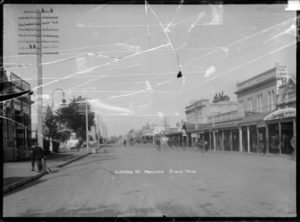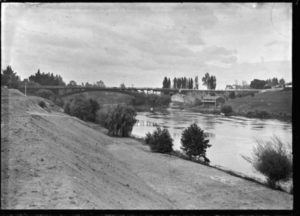Hamilton’s war, after the war
World War One took a toll on New Zealand, but for Hamilton, it was just the beginning of the pain and suffering.
It is not hard to imagine people from towns, like Hamilton, all over the world making Armistice Day, 1918, a day of jubilation that the war had ended.
But when we look back to that historic day and the weeks that followed, newspapers like the Waikato Times tell a different story of what was going on.
The sun was setting on a calm Waikato afternoon as a westerly spring breeze drifted through the streets of Hamilton. This was a day like any other day, people concern themselves with menial tasks and their day to day business. However, there was an aura of anticipation in the air.
The time was 6pm in New Zealand, on November the 11th 1918. London had just received confirmation that Germany had accepted Marshal Foch’s terms for an armistice, creating the ceasefire that ended the endless bloodshed of the First World War.

Back in New Zealand, the talk around Hamilton foreshadowed what was about to come, most locals, oblivious to what was going on in Europe, waited eagerly for an end to the four-year-long dilemma. It would not be until the following morning that the papers announced that the hostilities had ceased.
A column in the Waikato times rejoiced, “This is consummation for which all have yearned, and the Peoples throughout the world will fervently join in thanksgiving to the almighty that the carnage has at last been stayed, and that the cause of Justice, Righteousness, and Truth has been so gloriously vindicated.”
Even though the war was over, there is little evidence of rejoicing in Hamilton. This was probably because for many locals, the misery was yet to end.
Influenza, a foreign scourge, was tearing through communities all over the western world, and it had already tightened its deadly grip on Hamilton. Every day since the outbreak on November the 8th, the papers reported on the epidemic.
People stayed at home for weeks, shops were closed up till November the 18th, public meetings were discouraged, and public events were cancelled. There wasn’t even an event to celebrate the war’s conclusion and the victory in Europe.
The Hamilton/Franklin area suffered the most deaths in the country, the overwhelming majority of these casualties were Maori – 5,677 Maori from this area perished, which is more than half of the estimated 9000 deaths caused by Influenza in New Zealand. It was, without a doubt, devastating to local Maori Communities.

November 1918 was also the beginning of New Zealand’s relationship with Samoa. An article titled “No Return: of the German Colonies” details how, and why the confiscated territory of Samoa came under New Zealand jurisdiction.
Today, it would be difficult to think about Hamilton without acknowledging it’s Pasifika communities, the largest being the Samoan community which numbered around 2400 individuals in the 2013 census. Samoan is also the most commonly spoken non-official language in our country.
It was not until November the 23rd that the last report of a local killed in action arrived in the Waikato Times. A Claudlands Couple, E. & A. Twidle, received the news of their fourth son Vincent’s death, “Killed in Action on November the 4th.”
We can only imagine the heartbreak of those who had received the report of wars end before the news of their loved one’s death.
Sergeant V. Twidle would be the last case of a Hamilton local killed during the fighting. Still, over the following years, many war survivors would fall victim to complications brought on by past trauma, both physical and psychological.
It is interesting to reflect on the various Waikato Times columns published in November 1918 following the armistice. The most alarming thing is how little people’s behaviour changed in the wake of wars end, the paper still reported on people’s wartime anxieties just as it had while the war was raging.
There was little to no relief to hostilities. Provocateurs called for the victors to “Exterminate the German Race.”
This is most likely because the 1918 ceasefire between the Central Powers and the victorious Western Entente was no guarantee of peace. A peace that would not be delivered until the following year when the July 18th issue of the Waikato times announces “The dreadful drama ends, and, with the curtain-fall upon the final act, the peace bells ring!”
At last, the people of Hamilton and the world could breathe a sigh of relief and get on with their lives. They would do so with the admirable high hope that the peace would be forever lasting and an end to armed conflict globally.
Woe to us who have the curse of hindsight.




